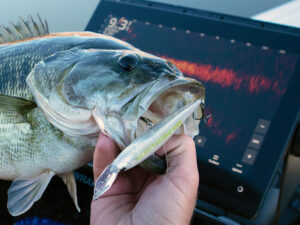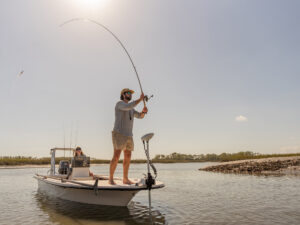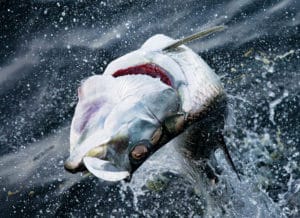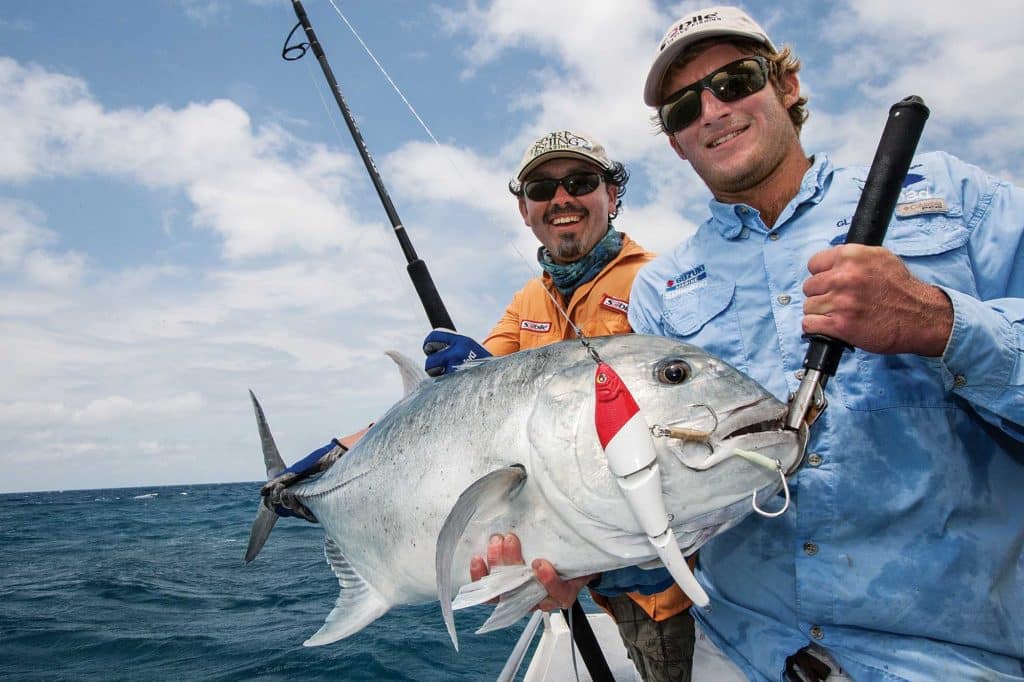
Tears streaming down my face and snot running out of my nose isn’t the way I like to remember myself, but truth be told, that’s the first thing that comes to mind when thinking about segmented lures. My older brother Bill gave me the first one I ever owned, a Rebel broken back, when I was no older than 8 or 9 — and it was a killer for the 1- to 2-pound largemouth bass in a local pond. Unfortunately, I had the bright idea to take it on the family boat for a saltwater-fishing trip. It caught fish all right, but a week later, when I opened up my tackle box, the freshwater lure’s hooks and hardware had been reduced to crumbling orange crud. The tears flowed.
Segmented lures have always been more popular in the freshwater realm than in the brine, for several reasons: A larger proportion of toothy fish in oceanic waters means more lost gear, and segmented lures tend to be more expensive; the multiple pieces and parts often require multiple metal joints, which need to be top-notch quality lest they respond to the saltwater environment in the same way that old Rebel did; and since the freshwater market is larger, it garners more of the attention of most lure companies, resulting in a wider diversity of nontraditional lures. That does not, however, mean that segmented lures aren’t just as effective in salt water as they are in the fresh stuff. In fact, in many cases they can prove more effective than single-piece lures.
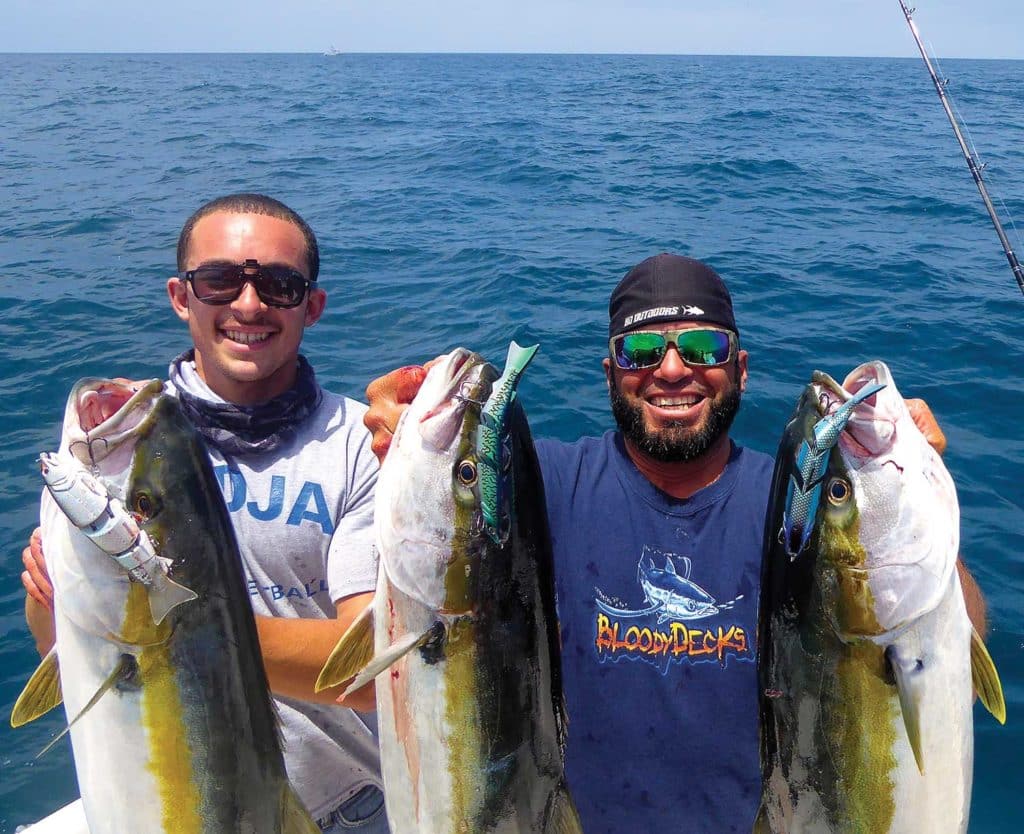
If Looks Could Kill
The most obvious advantage a segmented lure has over its stick-figure brethren is the ability to swim more naturally because the multiple pieces move independently. And according to marine biologist Daniel Bagur, author of Where the Fish Are, an Angler’s Guide to Fish Behavior, this visual property is incredibly important.
“How is a lure perceived by the fish?” he asks. “Most fish are visual predators, so the size and color of a lure are important, but equally important is the way the lure moves. Materials such as marabou can be used to enhance natural movement with a fly, but this is more difficult with a hard-molded lure; jointed lures provide a solution.”

As anyone who’s used lures such as a Bomber Jointed Magnum or a Rapala Sliver knows, as these lures move through the water, one segment zigs while the other zags. At least seen from a fisherman’s point of view, the swimming action is in fact quite realistic.
“A jointed lure has extra movement that more closely mimics the natural movement of a fish, which increases the visual appeal,” Bagur continues. “In addition, segmented lures also have a more realistic ‘feel’ to the approaching fish, as their lateral line picks up the vortexes left as the lure passes through the water. And this movement might also provide sound, if the parts move and tap against one another.”
Sebile focuses on this advantage with its triple-segment Magic Swimmer, noting that the lure is designed to “create turbulence first on one side, and then the other.” Which, of course, is just the way a real fish swims.

Segmented Reality
Some lures take this concept to the extreme, using many multiple segments instead of just two or three. A slew of these exist in the freshwater market, from manufacturers such as Jackall, Castic and Biwaa, but most are quite expensive, ranging from $25 on the low end to $50 at the high end. One company, Roman Made, even offers hand-made, foot-long wooden bass lures that list at $475.99. Leaving aside their rainbow trout patterns and freshwater hardware, with line-cutting critters such as wahoo, kingfish and bluefish swimming through the brine, I can’t imagine risking a single cast with one of these lures.
An exception to this rule is GameOn!’s Swagger Soft Tail line, seven-segment lures that go for $15.95. Though the shape of these lures strikes me as more bluegill than bunker, they do come with saltwater hooks and color patterns. And by utilizing Dyneema as opposed to metal to attach the segments, both cost and vulnerability to the saltwater environment are cut down.
“I do believe the multijoint swimbait can be more effective than a one-piece,” says Game On!’s Dan Orefice. “Whether you’re retrieving or letting the lure sink, you get an additional side-to-side action that you just don’t get from a one-piece lure.”
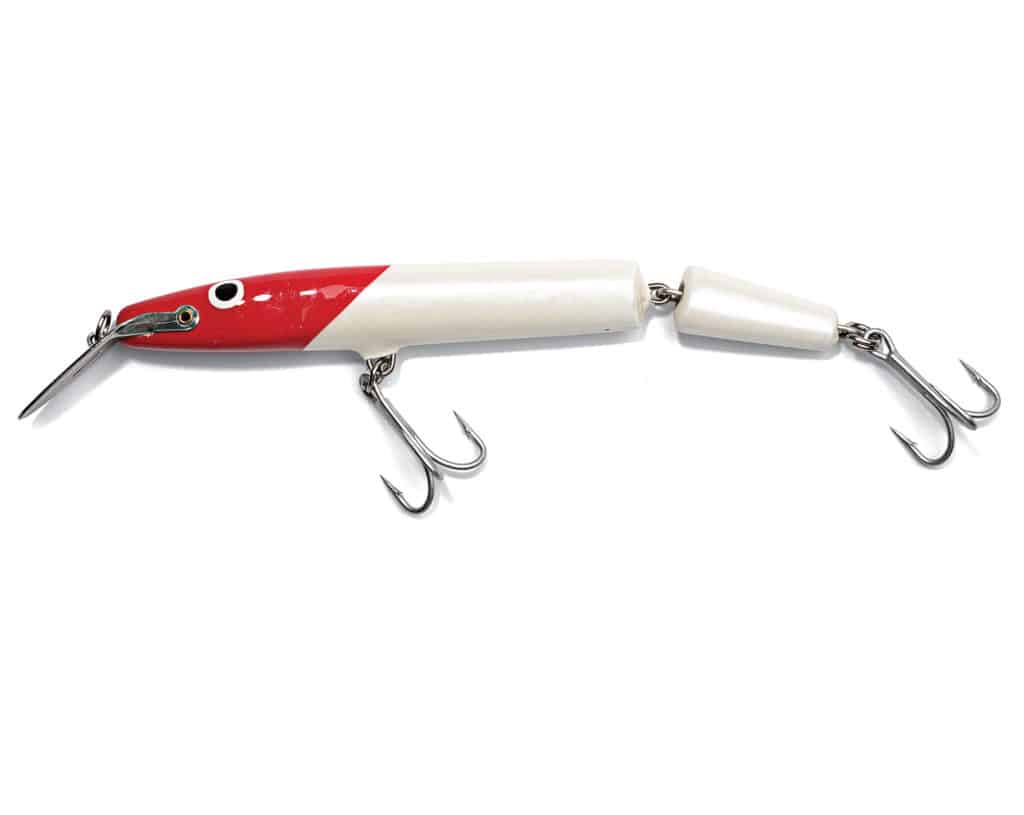
Sounds Like a Winner
While Bagur briefly mentions the potential for an articulating lure to create an audible attraction in addition to its visual appeal, Dr. Arthur N. Popper, professor emeritus and research professor at the University of Maryland’s Department of Biology, positively dwells on it. This shouldn’t come as a surprise because Popper is a well-known expert on the auditory abilities of fish.

“Fish make low-frequency hydrodynamic sounds when they turn,” he explains, “and they can hear low frequencies, and on up to the 400- or 500-hertz range — in some cases up to 1,000 hertz. It depends on the species. And whether they hear a lure also depends not only on frequency, but also on how loud it is. A lot of background noise might make it hard for them to hear a lure, just as it’s hard for you or me to hear a friend sitting across the table in a crowded restaurant.
“But almost all fish — almost all animals, really — use hearing to get a big-picture view of what they can’t see,” Popper continues. “This is the ‘acoustic scene,’ and it’s no different than the way we use our hearing to know what’s going on around us, even when we can’t necessarily see it.”
So, what are the chances the clicking and clacking of a segmented lure will be audible to a fish? “Many companies claim their lures attract fish with sound, but none that I know of have ever scientifically proved a thing,” Popper says.

To find out more, I tried a little experiment of my own. We loaded an audio spectrum analyzer app on a Samsung Galaxy, put the phone into a waterproof case, and started towing segmented lures past it. The results were intriguing, with most of the sounds created by the lures somewhere between 200 and 800 hertz, often covering a broad part of this spectrum. A Yo-Zuri Crystal 3D Minnow Jointed, for example, lit up the analyzer from 200 to 600 hertz, with the biggest peaks at around 300 hertz. This broad range of frequency is likely because the lure makes noise of several varieties: the clacking segments, a ball-filled rattle chamber, and the hooks swinging and banging against the hardware and the lure’s body all create slightly different sounds. In any case, it certainly made plenty of noise well within many fish’s hearing range.
Read Next: 15 Top Jerkbait Lures
While an experiment like this might be a bit less scientific than those performed by the likes of Bagur and Popper, it does make interesting food for thought. And it also makes one wonder if the added wiggle and sound that a segmented lure provides might just keep you from crying the blues the next time you go fishing.

